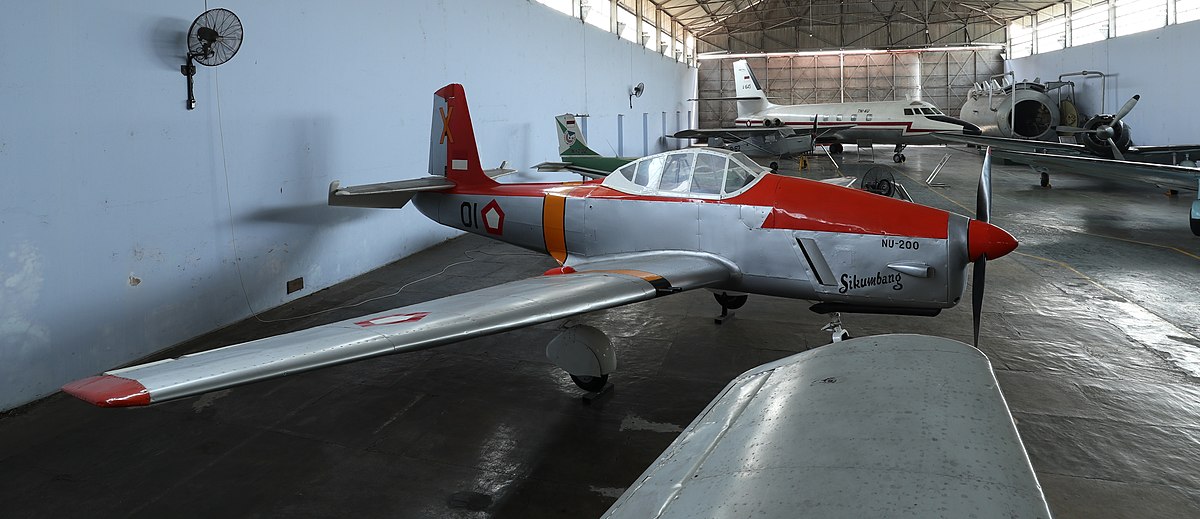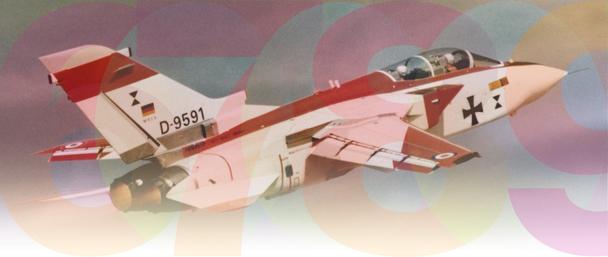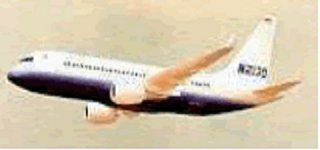N2130 Regional Jet
Companies considering a regional jet (or participation in a program) include PT Industri Pesawat Terbang Nusantara (IPTN) of Indonesia. Indonesia has indicated its desire to bring to market the IPTN-designed N-2130 turbofan, a 104- to 132-seat aircraft that began as an outgrowth of its N-250 turboprop. The N250 turboprop carrier was the pride of Indonesia. Coming exactly a week before the 50th anniversary of Indonesia's declaration of independence from the Dutch, the first flight of the N-250 turboprop in August 1995 brimmed with symbolism. The successful first flight for Indonesia's new N-250 commercial airplane led to an announcement of a plan for a mid-range jet aircraft to be finished in 2003 or 2004. Experts said the new, $2 billion plan was even more ambitious, entering a fiercely competitive arena. Habibie's son, a former Boeing engineer, was to head it up.
The N2130 Technology Program (NTP) was launched in October 1994 as a market and product-definition study. The NTP team was headed by Habibie's eldest son, Ilham, and consists of IPTN's younger, so-called "second generation", design engineers and managers. Its work was to be concluded by March 1997, with the drafting of the aircraft's design requirements and objectives.
PT Dua Satu Tiga Puluh (DSTP) as owner or holding company was founded in 1995 [1996?], soon after IPTN N250's roll out. Though industry officials pointed to the aerospace sector's lack of skill in finding and attracting varied sources of capital, the industry had made some progress in securing alternate funding. PT Dua Satu Tiga Puluh (DSTP) was founded to function as IPTN's fund-raising agency for the N-2130. DSTP was to raise the $2 billion needed for the design, prototyping, and certification of the aircraft through the private investment of individuals, corporations, and foundations, and an initial shares offering to the Indonesian public.
The aircraft itself, the twin jet 80-130 passenger aircraft N2130, was put into design since 1994, while the plan was already announced three years earlier. According to the timetable presented by IPTN during the Le Bourget Paris Airshow 1995, on March 1997 N2130 should be on 'Design Requirements and Objective' phase, by April 1997, it should have been in the preliminary design process which will be finalized in 2000. According to the 1995 time table, the all-Indonesian-made aircraft would have its maiden flight on March 2004, and the very next month go into certification process until it finally delivered to its first operator on the June 2006 Indonesia Air Show.
Considering the cost and level of technology involved, some observers questioned whether the N2130 project was just a ticket to participation in one of the other various Asian 100-seater projects. In a market report published on 16 May 1996, the Teal Group dismissed the project as a scheme "driven by techno-nationalist fantasies, not market realities." Even Western firms jockeying for a spot on the aircraft were guarded about its prospects.
By late 1996 three versions were envisaged, with a 29.45m-long airframe serving as the baseline 100-seat design. This will be followed by an 80-seat, 22.20m-shrink version and a 39.20m-stretch derivative, seating up to 130 passengers, in a single-class configuration. Subsequent consultations with airlines, however, revealed little support for either an 80-seater or a five-abreast cabin cross-section. So by 1997 IPTN had dropped plans to develop a shortened, 80-seat, version of the planned N2130 short-haul jet-airliner and instead opted for a larger-aircraft family with six-abreast seating for between 104 and 132 passengers.
Designers opted for a 3.95m-diameter circular-section hull, while the length of the baseline aircraft was been lengthened by 1m, to 31.25m. The baseline N2130, tentatively designated the -100, would be able to accommodate 114 passengers in single-class configuration, with 812mm seat pitch, or 104 in a mixed two-class layout. The stretched, 33.86m-long, -200 version would seat up to 132 passengers in an all-tourist-class configuration. In the face of increased competition from other Asian consortia in the 100-seat jet market, by 1998 IPTN had opted to speed up development by 2 years, leading to planned production of the first N-2130 aircraft by 2002 and deliveries beginning in 2004.
A wing part of a 1:7.89 scale half-span wind tunnel model was designed and built for Indonesian Aircraft Industries (IPTN) in the years 1999/2000 by Vojnotehnièki Institut Ratka Resanoviæa [VTI], Beograd, Serbia. The wing segment comprised: wing, including main wing box (1805mm half-span), single-slotted flaps (4 positions), clean high-speed leading edges, slats, an immovable aileron, and installation for measurement of pressure distribution on seven chordwise wing sections, ·wing-fuselage fairing, through-flow nacelle (TFN) and its pylon, with instrumentation for measurement of pressure distribution, turbofan power simulator nacelle (TPS) and its pylon, with instrumentation for measurement of internal flow parameters and other installations necessary or the operation of the power simulator.
Most of the model was produced on CNC milling machines. For some specific components CNC EDM (electrode and wire-cut) was used. Artistic hand finish was applied when appropriate. Main parts were built from high-grade stainless steel, while the less stressed parts were made from aluminum alloy. Quality control was carried out on CMM coordinate measuring machines. Main parts of the wing were the outer and the inner wing box, each box assembled from the upper and the lower half. Sides of the boxes formed two main spars of the wing. Leading and trailing edge devices were detachable in order to enable changing of wing configuration.
In July 2000 the wing was transported to ONERA facilities at Tolouse and there was assembled with the fuselage-tail assembly. During the summer of the same year the model was successfully tested in F1 and S1 wind tunnels.
In the decade of the 1990's the human aspect once again took center stage in the design and operation of commercial aircraft. As occupation health and safety has gained importance in society in general, it has gained even more importance in the design an operation of commercial aircraft. In aircraft design today, the man-machine interface is considered in every task of the human workload. The discipline of ergonomics truly impacts each phase of product or tool design. At IPTN, the ergonomics effort is principally being applied to the design of the cockpit, cabin and cargo compartment of the N250. The ergonomists at IPTN are keenly aware that there would be a conflict between the user and his working environment without proper attention to the human considerations in the design is left for ergonomists and innovative programs like IPTN's participatory approach, to ensure that the human aspect is optimized in the man-machine interface.
Wwhile industry sources confirmed the existence of a potential Indonesian market for regional aircraft, opinions differed as to the size of this market, an important factor in IPTN's ability to achieve the economies of scale necessary to produce an international competitive aircraft. A feasibility study by IPTN projected that 25 percent of global demand for regional jet aircraft of approximately 100 seats will be met through sales of the N-2130, specifically 168 units domestically and 632 units internationally during 2005-2025.
By 1998 the Indonesian aircraft industry faced serious economic and political uncertainty because of the region's financial crisis. Nonetheless, Indonesian industry officials indicated that the aircraft industry was proceeding into the preliminary and detail design stages of the N-2130 program. Though IPTN had long supported a large aerospace work force, employees' work hours were cut to reduce expenditures and the company plans to lay off 3,000 workers in 1998.
Despite a possible postponement of 2-3 years, as of 1998 Indonesia intended to continue development of the N-2130 regional jet and looked to market the aircraft throughout Asia. In 1998 DSTP officials indicated that the company was considering listing its shares on the Jakarta Stock Exchange in 5-6 years and may eventually allow foreign investment. As of September 1997, DSTP raised 25 percent of the N-2130's development costs. However, the ability of DSTP to meet its goal of raising $2 billion by 2002 was uncertain. DSTP officials indicated that the country's financial situation had severely inhibited fund-raising abilities, and complaints over the public shares offering have reportedly prompted IPTN to call for a review of the company's methods of capital mobilization.
On September 29, 1999, PT Dua Satu Tiga Puluh (DSTP), the company responsible for N2130's funding, was officially dismissed. Its preliminary design was to be handed over to the Ministry of Industry and Trade, and the US$ 70 million spent on the design process was to be considered as 'sunk-cost'.

www.globalsecurity.org


 en.wikipedia.org
en.wikipedia.org






